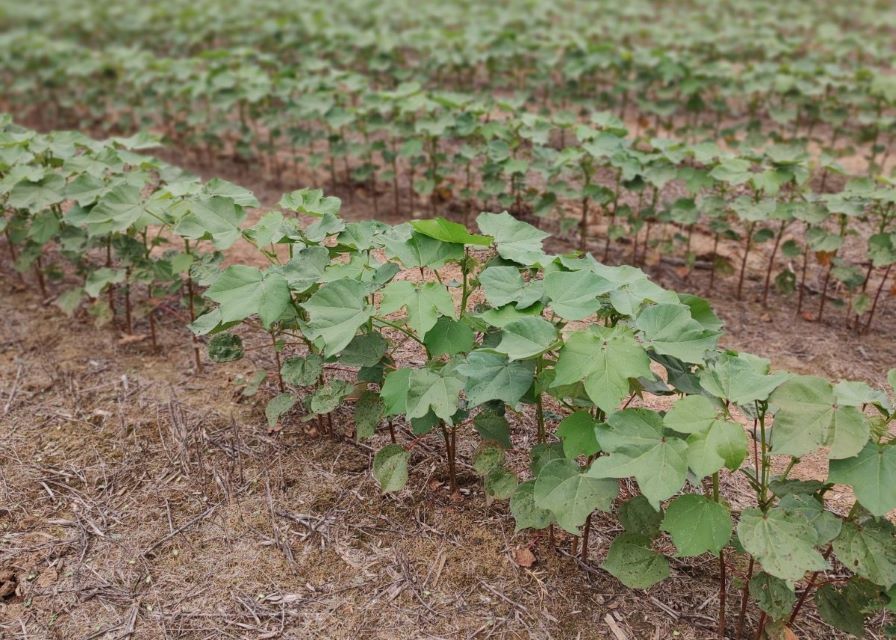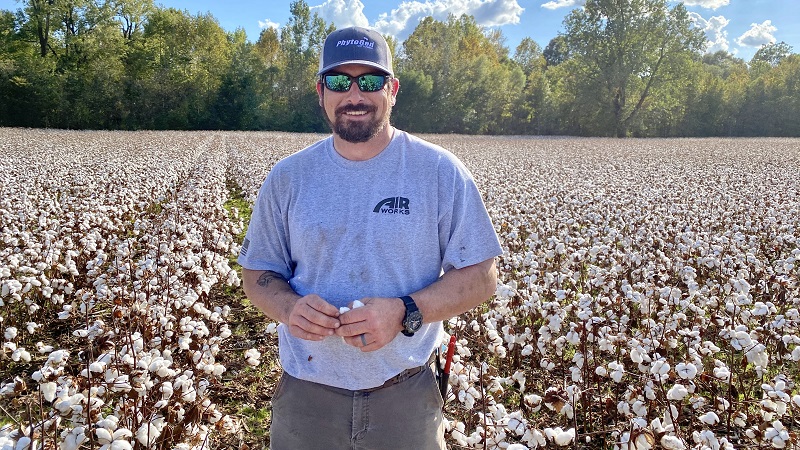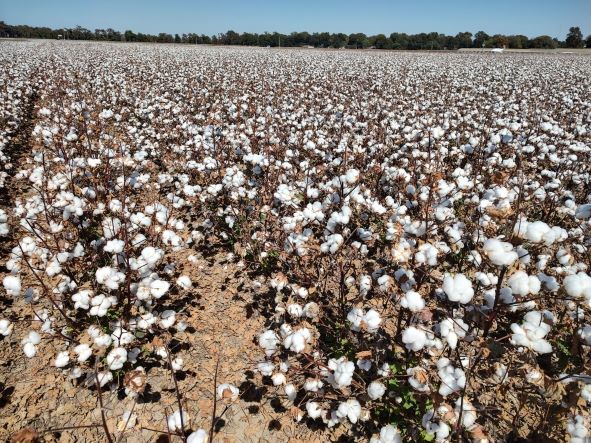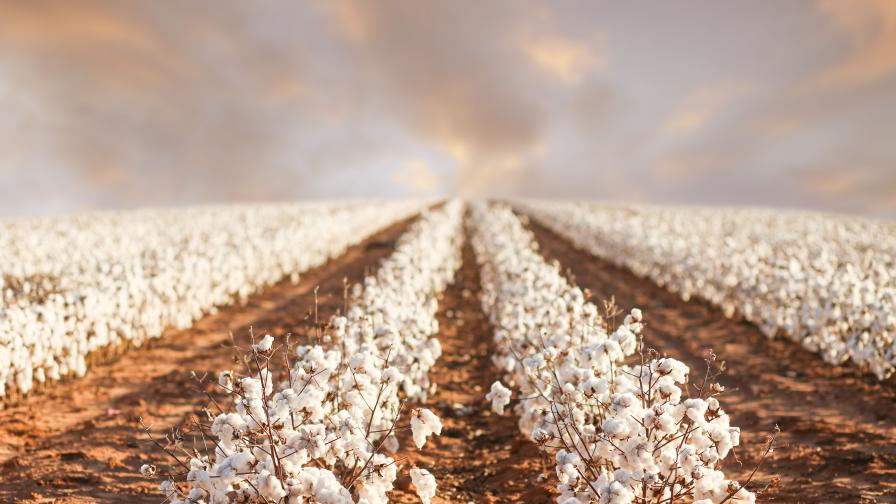Crop Scan Ag Report: Critical Management Time for Cotton
With cotton maturity ranging from harvest in south Texas to boll cracking to early flowering in other parts of the Cotton Belt, managing this crop to maximize yields is in a critical stage, especially in the lower Southeast (hello, remnants of Hurricane Debby) and Texas plains. Moth flights are underway in most areas, while plant bugs and stinkbugs remain the top problems.
Here’s what our contributing consultants had to report for early August.
Chad Harrell owns and operates Harrell Agronomic Services in Northeastern North Carolina.
Cotton in our region has advanced rapidly over the past couple of weeks. Most of our cotton is about 1-2 weeks ahead of last year. The earliest planted cotton is now approaching the fifth week of bloom with some fields beginning to bloom out the top. We have good soil moisture with more rain coming this week from a tropical storm headed up the coast.
Most growers have finally been able to catch up on PGR and insecticide applications over the past week as fields have dried out. Insect pressure has picked up over the past two weeks since we started getting rain, especially stink bugs and high numbers of lygus in some areas. We are now toward the end of our first major bollworm flight which seems to be broken due to all the rain. So far the 3-gene cotton seems to be holding up well to bollworms.
Most fields that did not cut out prior to getting rain have a decent boll load with a nice top crop setting.
Wes Briggs consults on cotton, corn, peanuts, soybeans, and small grains for growers in Georgia, Alabama, and Florida.
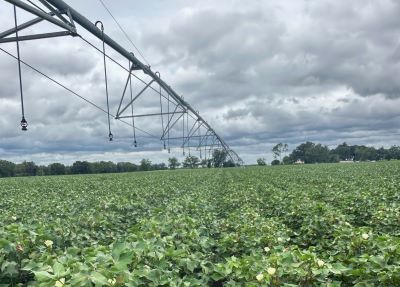 Storm clouds (Photo: W. Briggs)
Storm clouds (Photo: W. Briggs)
We got lucky on this storm (Hurricane Debby) in the southwest corner of Georgia. It was cloudy with 20-25 mph wind gusts, but very little rain. Some of the areas I check may have gotten an inch of rain. I’m not sure yet about our fields in Florida. We won’t get down there until Wednesday. But it was nothing like the southeast corner of the state is getting. They’re getting hammered pretty hard. Those growers are in desperate need of a good crop, like we all are.
We’re seeing some corn earworm escapes in Bollgard 3, but nothing really of importance or concern. Our number one pests are still stinkbugs and plant bugs. Whiteflies have not gotten any worse.
In my corner of the world, we’re at that critical point from mid-August through mid-September where we have to manage boll rot, stemphylium, and target spot with our water. If we can manage our water, we can generally do pretty well in getting this crop where it needs to be. We’re still making cotton right now, and we need these next 30 days to cooperate with us. These extended periods of leaf wetness we’re in right now from afternoon showers are not helping. We need to set that top crop, which is so important for us here in south Georgia. We can’t always bank on just a bottom crop because of what usually happens in August and September.
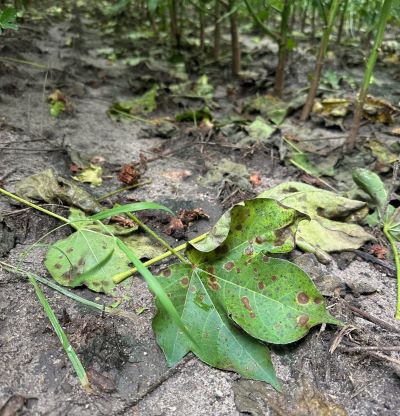 Target spot (Photo: W. Briggs)
Target spot (Photo: W. Briggs)
We’re still in a big moth flight. The fields are full of every moth known to man. We’ve been treating foliage feeders in peanuts and soybeans, and we have a lot of worms hatching out right now. We’ll treat those this week and next week.
Most of the weed control is out of the way, but we may have to come back and spray a few borders and waterways. Nematodes are starting to hit us hard in some of our older cotton. Some of our oldest cotton is cracking open, and some of our youngest cotton hasn’t bloomed out yet.
We still have a long way to go here in my area. Rain is one thing, but when you get these 3–4-inch rains on these sandy soils, you lose a lot of fertilizer. Right now, we’re trying to manage with PGRs and this last fertilizer to keep this crop from running out of gas and crashing on the tail end. There’s a fine line when trying to manage water, PGRs, fertility, and top crop, and it makes things complicated at times.
Tucker Miller is a Mississippi-based independent private consultant for cotton, soybeans, corn, peanuts, rice, and vegetables.
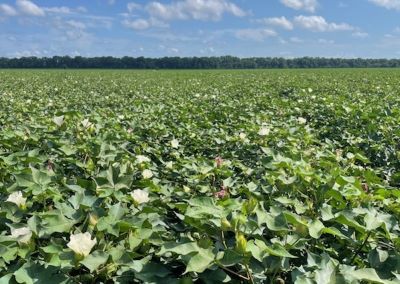 Photo: T. Miller
Photo: T. Miller
Our cotton has progressed rapidly this past week. Our oldest cotton is at NAWF 2 , and the later planted cotton is NAWF 6 and 7. We just sprayed our cotton this past week for lygus. This may be the last spraying on the old cotton. Our younger cotton will require protection for two to three more weeks.
Ten days ago, we had rain and cloudy weather which caused a lot of shed. This event probably will delay us on the end, but I think the crop is still very good.
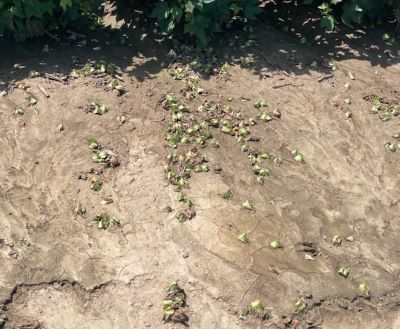 Fruit shed (Photo: T. Miller)
Fruit shed (Photo: T. Miller)
Farmers are mowing and spraying field edges and turn roads to get rid of grass and weeds .
Our next decision will be whether or not to water this cotton again. Most of us don’t like to furrow irrigate in mid-August because of the potential for boll rot. It has been hot and dry this past week, and we will have to decide whether or not we irrigate one last time.
The corn crop is mature, and some samples will be cut this next week. Some dryland corn has already been cut.
Our oldest soybeans are R 6.5 while our youngest are R 4. We had to spray some of the younger beans last week for bollworms. Overall, the insect pressure has been light in the soybeans. We are getting close to the end, and I hope everyone has a good finish .
Mark Nemec is an independent agricultural consultant for cotton, wheat, grain sorghum and corn in the Blacklands and Brazos River Bottom area of Central Texas.
Summertime has finally shown up in Central Texas. Other than some small popcorn showers around, the faucet has been turned off. Extreme heat, with highs over a hundred degrees forecast for the week ahead, will really push this crop toward the finish line fast. The older cotton fields have starting to reach cutout. Dryland areas are starting to find open bolls on the early planted areas.
After the rains we had recently, a lot of PGRs went out last week. We are still finding stinkbugs around along with spotty aphids and spider mites. Later fields will still be susceptible to these pests. There is also some bollworm activity that needs to be monitored.
Kerry Siders is Texas A&M AgriLife Extension Agent-IPM for Hockley, Cochran, and Lamb Counties.
Southern High Plains of Texas cotton ranges from just beginning to bloom (very late) with more than 6 nodes above white flower (NAWF) to hard cutout with 1 NAWF.
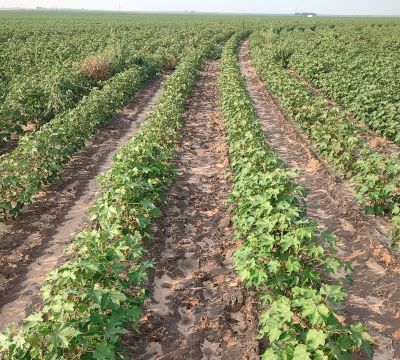 Photo: K. Siders
Photo: K. Siders
Using our IPM scouting fields as a representation of the area cotton crop, we see that 25% of fields have reached physiological cutout (<5 NAWF) this week. For those fields, we need approximately 400 more heat units (HU) to accumulate to be safe from bollworms. With the current weather trend of +20 heat units per day, those fields which have reached cutout should be safe from bollworms around Aug. 25. The remaining 75% of the cotton acreage has such a wide range of maturity levels that I would be remiss to say when those fields might be safe from worms.
I would approach these later maturing fields from this angle. We historically say our last effective bloom date is Aug. 20. This is a date in which a boll can be formed, have time to mature, and contribute to yield. Therefore, if we continue with this weather pattern into September, and we are accumulating even 18 HU/day, we can add 22 days to this date. This would give us a target of Sept. 11 for those late fields needing to be scouted and protected from worm issues. The point being is that NAWF is an important gauge of maturity and can help project time needed to be safe from worms and even manage irrigation.
Currently, bollworms are just beginning to be found infesting area fields and need to be scouted, particularly those varieties with no Bt technology. Lygus, stinkbug, and cotton aphids should be included in those scouting procedures. Cotton aphids have been the most common insect across many acres. To date, beneficial insects such as lacewing and lady beetles have kept up and disposed of infestations. Remember, cotton aphids thrive in skippy cotton, and excessive/late nitrogen. Late nitrogen can also delay cotton maturity.
For more information on managing cotton insects in Texas, click on this link.
My priority list for the rest of August and going into September:
- Keep a close watch on cotton bollworms, larva pests in general, cotton aphids, and lygus. Scout, apply economic threshold, act on good information.
- Continue with late season weed control: residual herbicide, cultivate, hoe, whatever it takes to keep Palmer amaranth from going to seed. It is a numbers game.
- Be careful when irrigating not to cause additional vegetative growth resulting in delay of plant maturity. The goal is to finish blooming before the end of August.






